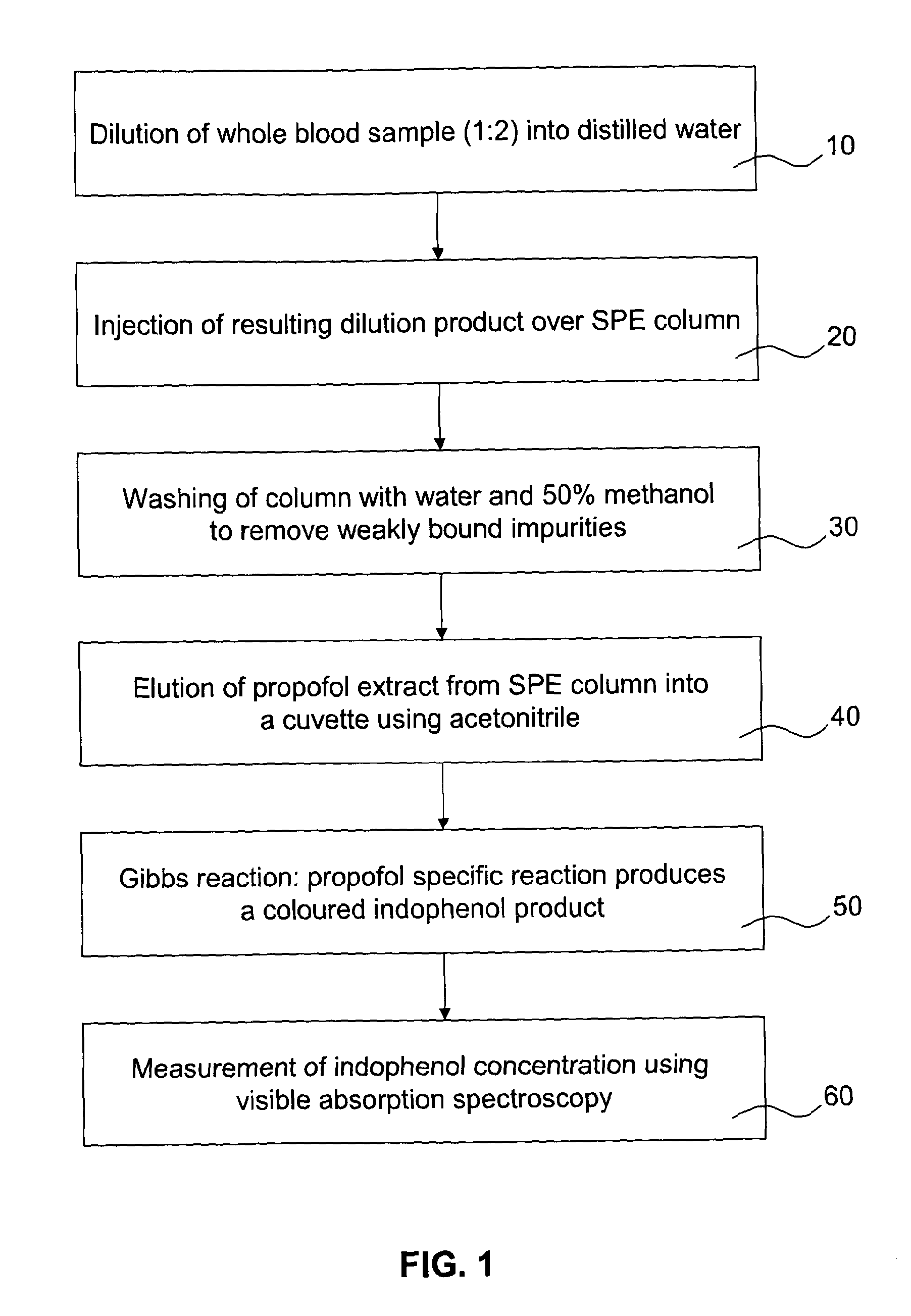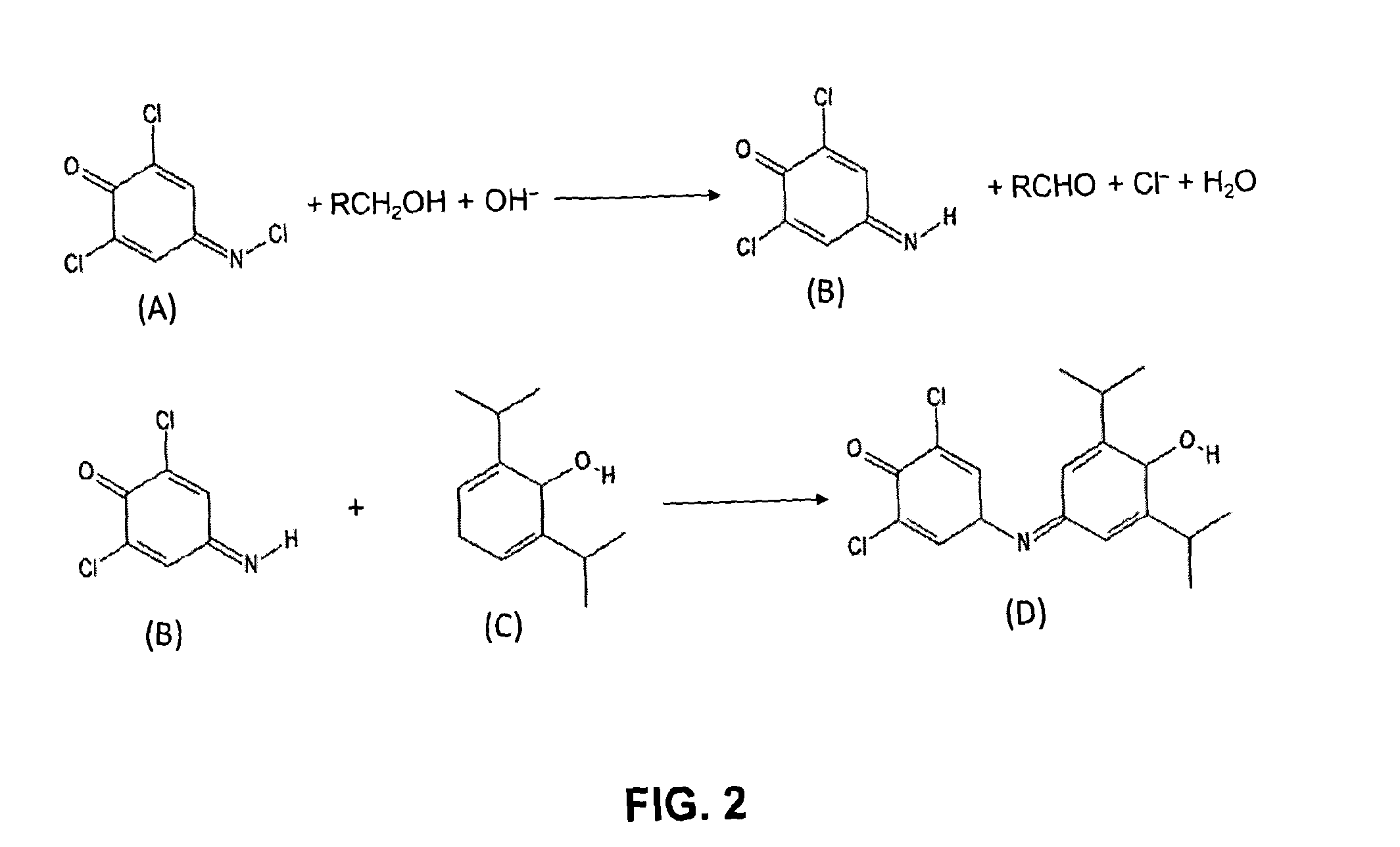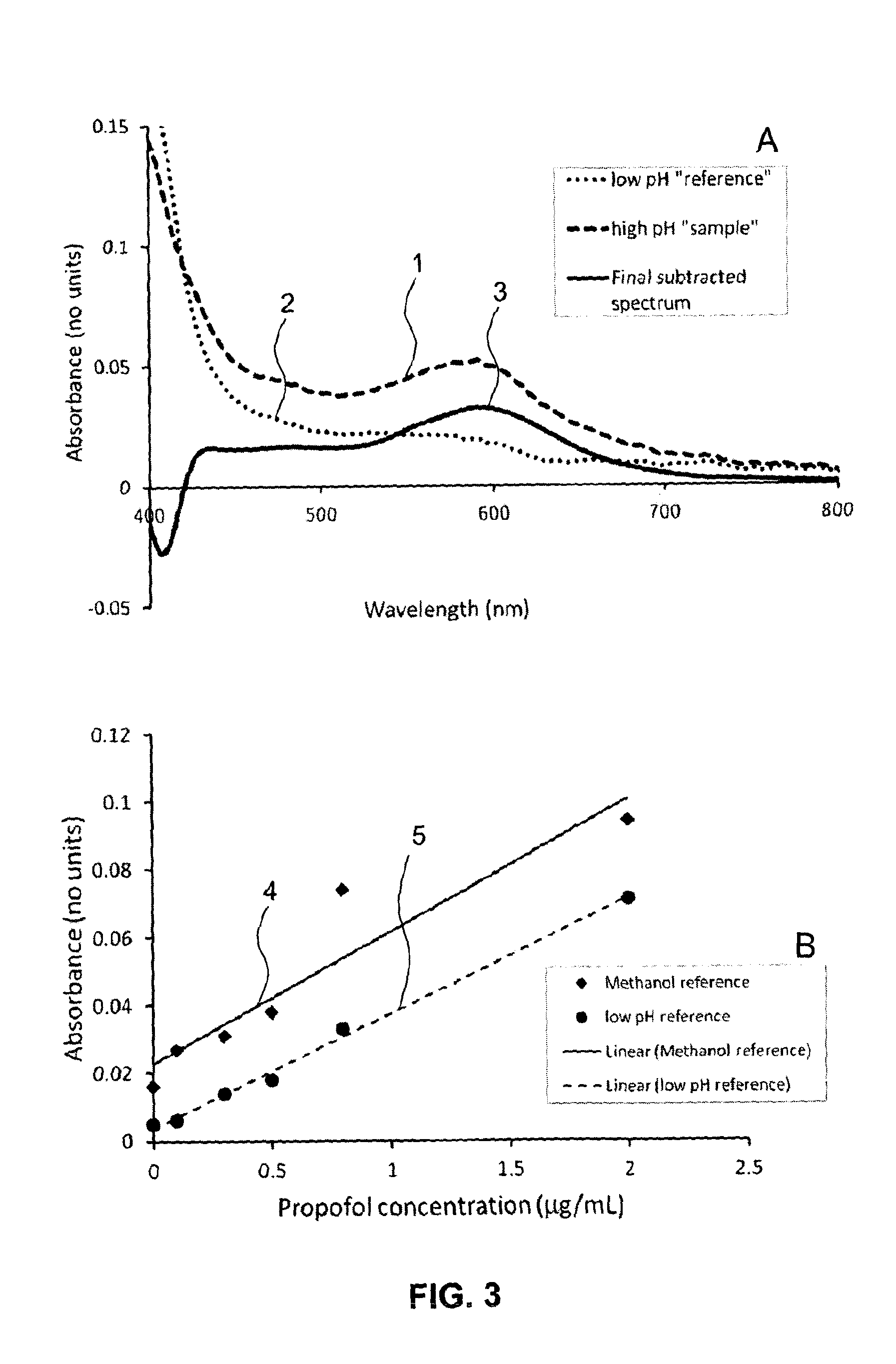Analyte detection method
a technology of analyte and detection method, applied in the direction of material testing goods, biochemistry apparatus and processes, immunoassays, etc., can solve the problems of difficult detection of small molecules in biological samples, many compelling needs remain unmet, and even greater challenges
- Summary
- Abstract
- Description
- Claims
- Application Information
AI Technical Summary
Benefits of technology
Problems solved by technology
Method used
Image
Examples
example
[0050]The present invention will be described in further detail by way of the following non-limiting example. In this example, the anaesthetic drug propofol is detected from whole blood using solid phase extraction (SPE) followed by a Gibbs reaction and detection by absorption spectroscopy. Established measurement protocols for low propofol concentrations rely on time consuming and complex HPLC-based assays. The low complexity and cost of the technique described in this example enables a propofol assay that can be performed in a near patient setting.
[0051]A blood sample (preferably 1 ml), which contains a known concentration propofol, is diluted 1:2 into water and then a known volume of this diluted sample, preferably 1.5 ml, is applied to a reverse-phase SPE column. The column is washed with (preferably (1.5 ml) of deionised water and (preferably 0.75 ml) of a 1:1 mixture of water and methanol to remove weakly bound impurities. The propofol extract is then eluted from the SPE colum...
PUM
| Property | Measurement | Unit |
|---|---|---|
| second wavelength | aaaaa | aaaaa |
| second wavelength | aaaaa | aaaaa |
| wavelength | aaaaa | aaaaa |
Abstract
Description
Claims
Application Information
 Login to View More
Login to View More - R&D
- Intellectual Property
- Life Sciences
- Materials
- Tech Scout
- Unparalleled Data Quality
- Higher Quality Content
- 60% Fewer Hallucinations
Browse by: Latest US Patents, China's latest patents, Technical Efficacy Thesaurus, Application Domain, Technology Topic, Popular Technical Reports.
© 2025 PatSnap. All rights reserved.Legal|Privacy policy|Modern Slavery Act Transparency Statement|Sitemap|About US| Contact US: help@patsnap.com



